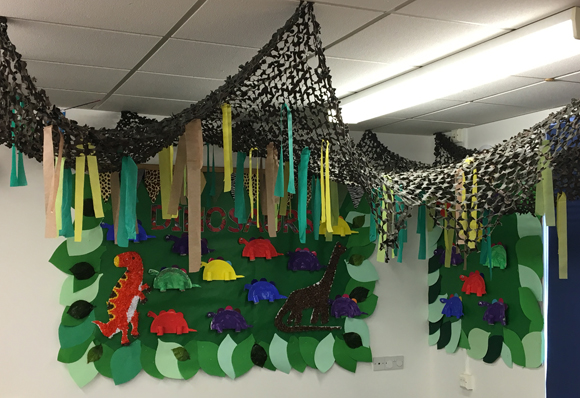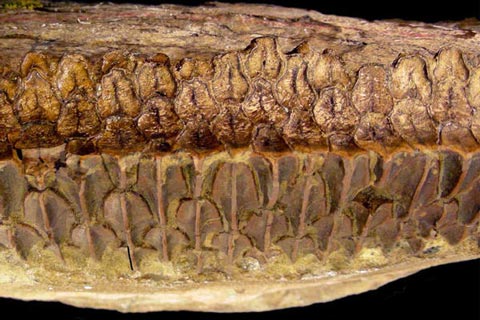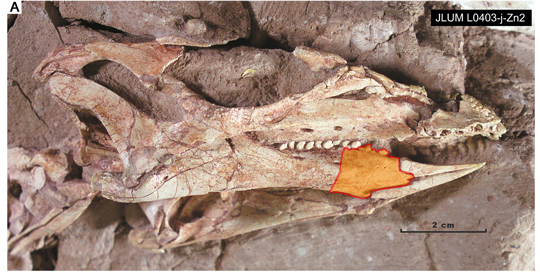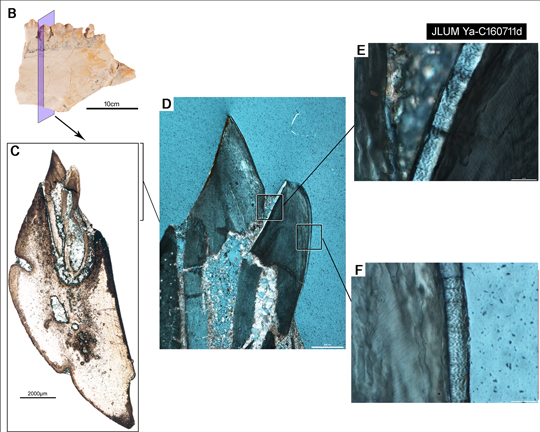Reception Children Learn All About Dinosaurs
Class 1 and Class 2 – “Dinosaur Roar”
Children in the Reception classes at The Berkeley Academy (Cheshire), have been learning all about dinosaurs and prehistoric animals this term.
A member of our teaching team was dispatched to deliver two workshops, one for each of the Reception classes (Class 1 and Class 2) and got the opportunity to work in the beautifully clean and well-appointed school hall. The hall at the school has some amazing pictures on display including a set of twenty-six pieces of art, all supporting an alphabet theme. Our dinosaur expert really appreciated the painting of the two skeletons that represented “X for X-rays”. In the two Reception classrooms, there were plenty of examples of Foundation Stage Two artwork, with some amazing dinosaurs made from paper plates.
Reception Classes Make Paper Plate Dinosaurs

Picture credit: Everything Dinosaur
The enthusiastic teaching team were surprised to learn that there actually was a dinosaur called Plateosaurus!
Dinosaurs and Prehistoric Animals – A Highly Creative Curriculum
The Reception children were certainly enjoying the term topic and during our workshops they were very enthusiastic armoured dinosaurs, moving slowly and quietly through the forest. They also learned how T. rex arms worked and the children demonstrated lots of attentive listening. Young Lucas proved his amazing pre-knowledge by confidently identifying Ankylosaurus. Lucas and his friends know a great deal about prehistoric animals.
Colourful Dinosaurs and Prehistoric Animals

Picture credit: Everything Dinosaur
The dinosaur and prehistoric animal motif had been used to link with key learning objectives for the Reception children during the autumn term. The eager, young palaeontologists had been gaining confidence with numbers, learning to recognise the value of different numbers and to visualise quantities. A clear and easy to follow dinosaur themed number display had been helping (above).
Creative Play Aids Learning
The spacious and tidy Reception classrooms provided lots of opportunities to display the children’s work. Within the Foundation Stage, there is a clear focus on supporting personal, social and emotional development as well as assisting with physical development and communication skills. Our dinosaur expert spotted a poster inspired by the dinosaur picture book by Paul and Henrietta Stickland, the children had been pretending to be dinosaurs and considering how it might feel to be a prehistoric animal.
Dinosaurs and Prehistoric Animals on Display!

Picture credit: Everything Dinosaur
We hope that the additional resources we supplied prove useful to the dedicated teaching team, we know that the dinosaur models and super-sized playmat that our dinosaur expert donated to the school will help support the term topic and to continue the theme of learning through creative play.
Visit the Everything Dinosaur website: Everything Dinosaur.





